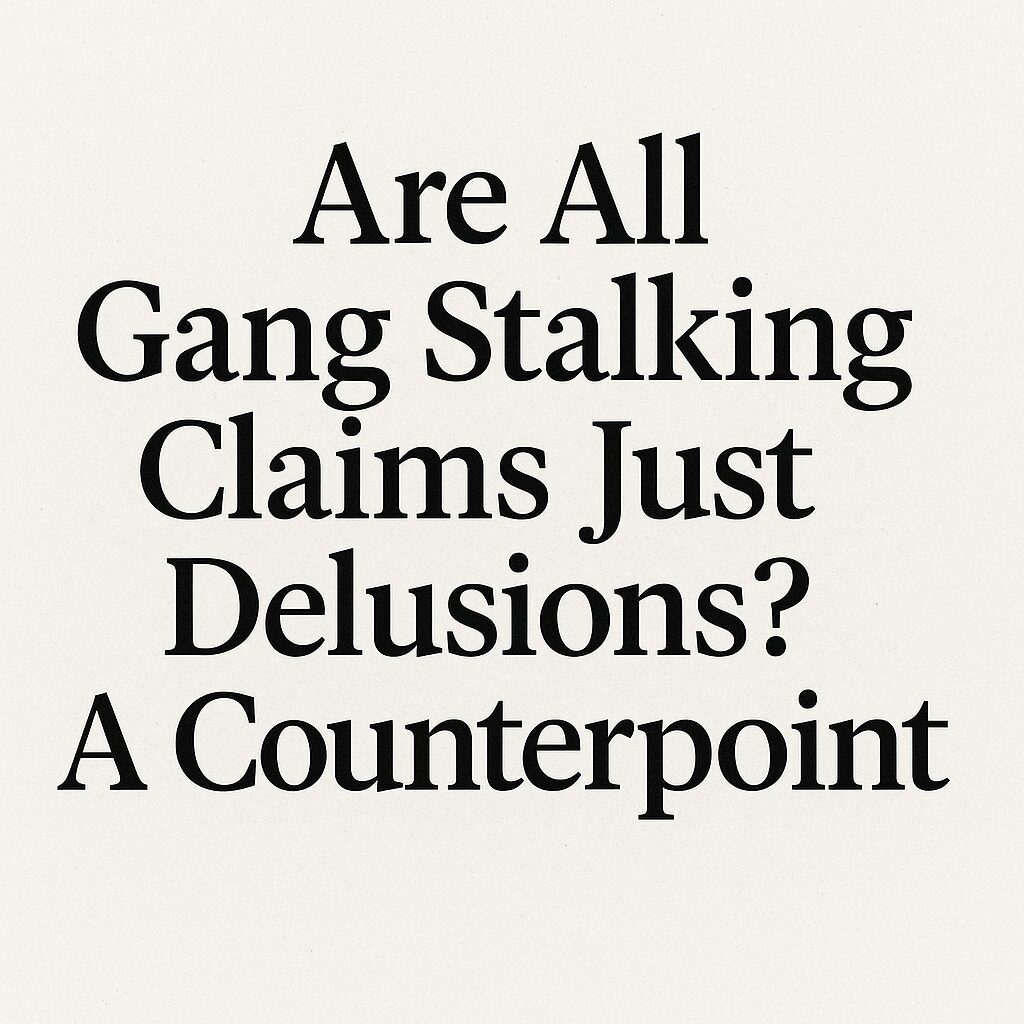The Problem of Overgeneralization
A 2015 master’s thesis argued that online “gang stalking” communities are harmful echo chambers where people with delusional disorder reinforce each other’s paranoia. While this framing sounds neat and clinical, it rests on shaky ground. There is little peer-reviewed research on the subject, and labeling every Targeted Individual (TI) as delusional ignores the messy reality of the Internet.
Misinformation, Bots, and Online Noise
Reading a message board does not mean every story posted is genuine. The modern web is full of bots, sock-puppets, and deliberate misdirection campaigns. Some posts may exaggerate, troll, or intentionally discredit others. This makes it almost impossible to treat the community’s content as a single unified “delusional culture.” Genuine accounts can be drowned out by noise.
Why Verification Is So Hard
Unlike pro-anorexia or pro-suicide forums, TI communities revolve around external claims of harassment, surveillance, or covert technology use. These claims are hard to prove or disprove. As a result, many who share their experiences online are met with doubt, dismissal, or accusations of mental illness. For people already isolated, that skepticism deepens the gap between them and any real support.
Historical Precedents of Dismissed Claims
History shows that groups dismissed as paranoid were sometimes correct.
- COINTELPRO: The FBI ran covert operations against activists, only exposed after leaked documents.
- NSA Mass Surveillance: Once denied, later confirmed by the Snowden leaks.
- Pegasus Spyware: Governments secretly used phone-hacking tools against journalists and dissidents.
- “Gone Girl” Kidnapping Case (California, 2015): A couple reported being drugged and the woman kidnapped. Police accused them of lying, even calling it a hoax. Only years later was it proven they were telling the truth.
These cases show how claims that sound implausible can later be validated. What looks like “delusion” in one era can be revealed as fact in another.
The Limits of Theories
Sociological models like Emergent Norm Theory explain how group norms form but do not establish whether the beliefs are true or false. Relational psychology may help clinicians build rapport, but reducing everything to “just a delusion” risks ignoring genuine cases of abuse, surveillance, or emerging technologies.
Toward a Balanced View
TI forums are not monolithic. They include the delusional, the mistaken, the manipulated, and the potentially genuine. Treating them all as mentally ill silences real people and avoids hard questions. A balanced approach would combine careful research, technical investigation, and ethical clinical work.
Conclusion
Gang stalking forums may contain harmful reinforcement loops—but they are also messy spaces where doubt, misinformation, and possible truth coexist. Dismissing everyone as delusional oversimplifies a complex phenomenon. A more honest approach is to admit uncertainty, remain open to investigation, and avoid silencing people whose voices may matter most.
